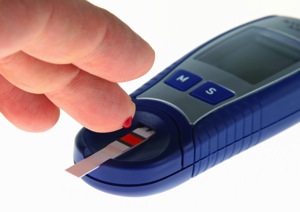Crash in the afternoon but wide awake at 3 or 4 a.m.?

Are you often wide awake around 3 or 4 a.m., your mind racing with anxiety, but then collapsing into a near coma in the late afternoon? This maddening cycle of waking up and falling asleep at inconvenient hours is often relieved by managing low blood sugar.
Why you’re wide awake at 3 or 4 a.m.
Although sleep is a time for the body to rest, your brain is still busy working on repair and regeneration, transforming the day’s impressions into lasting memories, and keeping you entertained with dreams.
The brain demands more fuel than any other organ, about 20 percent of the body’s total supply. These needs don’t abate during sleep, when your body is fasting.
In the absence of food, the body keeps the brain going by gradually raising the adrenal hormone cortisol, which triggers the production of glucose to feed the brain through the night.
At least in theory.
Chronic low blood sugar breaks this system down because it skews cortisol rhythms and release. When your brain starts to run low on fuel during the night, cortisol may lag in triggering glucose release.
The brain cannot wait until breakfast and perceives this lack of fuel supply as an emergency. As a result, the body releases more urgent “fight-or-flight” adrenal hormones, which raise blood sugar back to safe levels.
Unfortunately, these adrenals hormones are also designed to help you either flee from danger or fight it. This does not bode well for a sound night’s sleep and explains why if you wake up at 3 or 4 a.m., it’s usually with a mind racing with worry.
Meanwhile, 12 hours later when you could really use the energy to finish a work project or deal with after-school duties, you crash and can barely function thanks to blood sugar and cortisol levels bottoming out. Reaching for that shot of caffeine may pull you through, but in the long run it’s only compounding the problem.
How to fall asleep if you wake up at 3 a.m.
If you wake up at 3 or 4 a.m. with a racing mind, eating a little something may feed your brain and calm your mind so you can fall back asleep. But do not eat something sugary, which will spike blood sugar and perpetuate the cycle. Instead, eat some protein and fat.
Examples include nut butter, a little bit of meat, boiled egg, or a coconut snack. Have these prepared ahead of time and even next to your bed so you don’t have to go into the kitchen and turn on bright lights. You will not feel hungry because adrenal hormones are appetite suppressants, but you don’t need to eat much.
How to avoid the afternoon crash
To avoid the afternoon crash without caffeine you need to stabilize blood sugar as a way of life. Eat frequently enough to avoid sending blood sugar into a nose dive, and avoid foods that cause blood sugar to spike and crash: Sugar, caffeine, energy drinks, too many carbohydrates, and starchy carbs.
How do you know if you have low blood sugar?
Low blood sugar symptoms include:
- Sugar cravings
- Irritability, lightheadedness, dizziness, or brain fog if meals are missed
- Lack of appetite or nausea in the morning (this is caused by stress hormones)
- The need for caffeine for energy
- Eating to relieve fatigue
A variety of nutritional compounds can further support your blood sugar handling and stress hormone functions so you sleep better. Ask us for advice.


 Often chronic health problems can be traced back to one thing: unstable blood sugar that comes from eating too many desserts, sweet coffee drinks, processed grains (bread, pasta, etc.), and other starchy foods. Our cultural complacency with high-carbohydrate diets has made us the most obese and chronically sick population in the world.
Often chronic health problems can be traced back to one thing: unstable blood sugar that comes from eating too many desserts, sweet coffee drinks, processed grains (bread, pasta, etc.), and other starchy foods. Our cultural complacency with high-carbohydrate diets has made us the most obese and chronically sick population in the world.